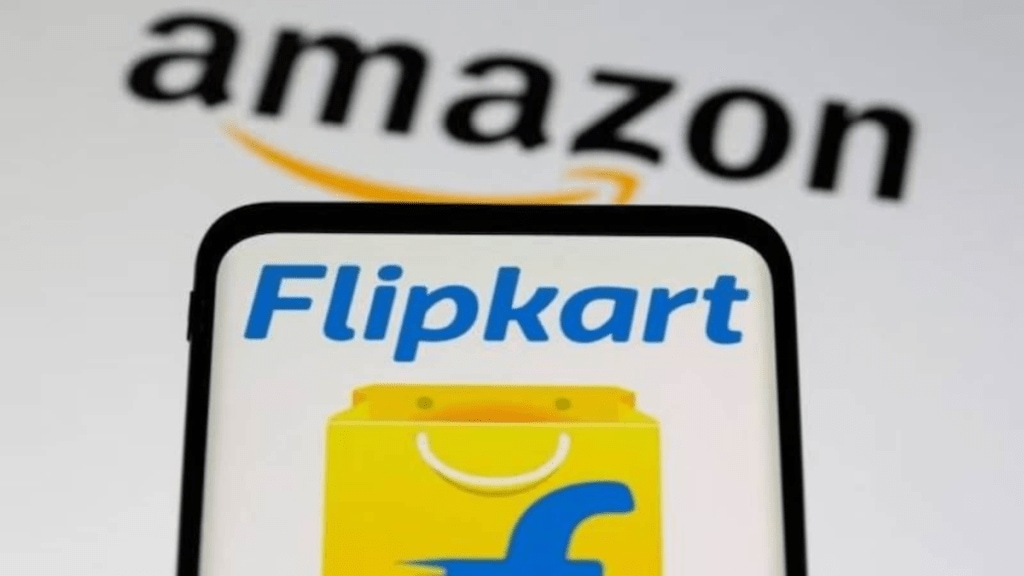For Flipkart and Amazon this festive season will not just be about flashy discounts and all-night shopping marathons. With the cut in goods and services tax (GST) on a wide range of consumer goods and fast-moving consumer products, both the e-commerce giants are preparing for what could be one of their busiest and most competitive sale seasons in recent years.
Buoyed by improved consumer sentiment, shoppers are expected to loosen their purse strings. The optimism is being matched by the platforms, which are gearing up to roll out aggressive pricing, early access for members, and tie-ups with banks and brands to make the most of the upcoming surge.
Flipkart has already announced that its Big Billion Days sale will begin on September 23. Amazon has yet to fix dates for its Great Indian Festival, but if past years are any indication, the two events will go live within hours of each other. The parallel launch has become a seasonal tradition, turning the last week of September into a high-stakes battleground for consumer attention.
Smartphones are once again expected to dominate wish lists. Amazon has teased up to 40% off on models from Apple, Samsung, iQOO and OnePlus, while Flipkart is pushing big-ticket launches such as the iPhone 16, Samsung Galaxy S24 and Motorola Edge 60 Pro. Both platforms are also positioning Samsung’s new Galaxy Tab S11 series and the Galaxy S25 FE as marquee products, betting on buyers who are keen to upgrade.
Electronics and appliances are likely to see equally sharp markdowns. Amazon has promised as much as 80% off on gadgets and accessories from brands like HP, Sony and boAt, and up to 65% off on home appliances from LG, Haier and Godrej. Flipkart is advertising what it calls “double discounts” in categories such as large appliances, with washing machines, televisions and laptops forming the core of its promotions.
GST cut advantage
The timing of these deals has added significance this year. The GST cut, which will come into effect from September 22, has lowered price points across a host of categories. That leaves platforms not only with more room to sweeten offers but also with an incentive to pass on part of the benefit to consumers. People tracking the sector say inventories are being adjusted at a rapid pace so that updated invoicing lines up with the new rates once the sales go live.
Fashion, lifestyle and beauty products are also being readied for heavy promotion. Amazon is offering between 50-80% off on apparel and grooming lines from Crocs, L’Oréal and Titan, alongside collections from its in-house Karigar, Saheli and Local Shops programmes. Flipkart is countering with furniture, apparel and lifestyle deals under its Big Billion Days umbrella, aiming to draw in first-time online shoppers along with repeat buyers.
Financial tie-ups are becoming an increasingly important hook. Amazon customers can expect 10% instant discounts through State Bank of India cards, while Flipkart is partnering with Axis Bank and ICICI Bank for similar offers. Both companies are leaning on EMI schemes, “pay later” options and UPI-based discounts to make high-value purchases easier to manage.
Battle for the Indian consumer
The backdrop to all this is a revival in consumer demand. According to the Datum Festive Barometer, festive e-commerce sales are projected to grow 27% year-on-year to Rs 1.2 lakh crore in 2025. Mobiles and lifestyle categories continue to account for more than half of that, but segments like grocery, personal care and appliances are expanding their share, a sign of a more diversified festive basket. Quick commerce is expected to contribute 12% of festive online sales this year, up from 8% in 2024, as shoppers turn to instant delivery for last-minute needs.
Amazon and Flipkart remain the dominant choices, with over 80% of surveyed consumers planning to shop on at least one of the two. Industry watchers point out that what sets this season apart is not just the depth of discounts, but the environment in which they are being offered. Both urban and rural consumers are showing greater confidence, and the recent tax cuts have added another layer of momentum. The result is a season that promises to be different from the last few years.

